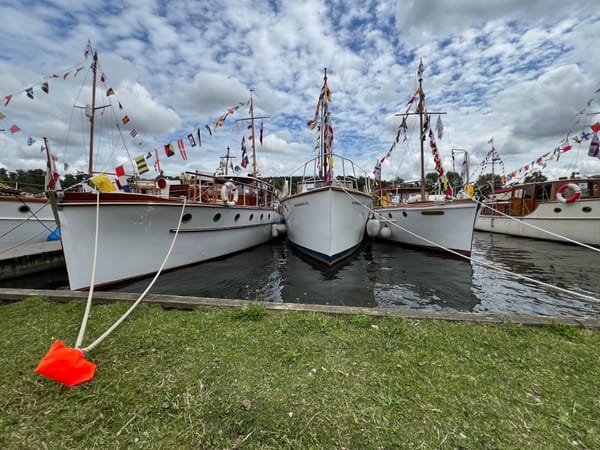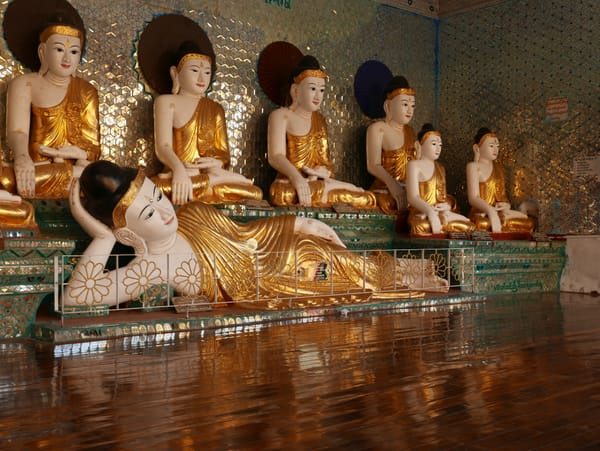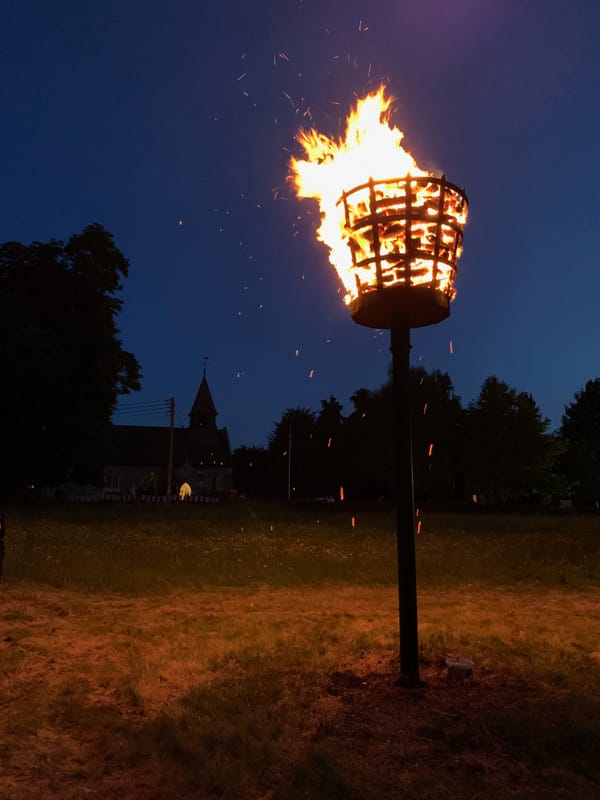Cambodia — Day 4: War Museum, Siem Reap, Cambodia — part 1 of 2
A sobering experience
September 2015
The tour’s last stop was an optional visit to the local War Museum. The visit turned out to be a sobering experience.
The Cambodian Civil War ran from 11 March 1967 – 17 April 1975 (see Wikipedia) and resulted in a victory for the Khmer Rouge (June 1951 – March 1999; see Wikipedia), which led to the Cambodian–Vietnamese War (21 December 1978 – 26 September 1989; see Wikipedia). The War Museum seemed to focus mainly on the Cambodian–Vietnamese War.
I arrived at the museum at 11:10 am for a 40-minute tour. I had no idea what to expect, and what I experienced was sobering, harrowing, depressing and … well, words cannot describe it.
My guide had been in the army for nine years in the 1980s, and I knew it would be an interesting tour when he told me that he had died ten times while serving, as he put it, in surprisingly good English, more times than a cat.
During his nine-year army career, he had been shot three times, badly burnt once, blown up by a grenade, and lost a leg and sight in both eyes due to a landmine. Thanks to an operation, he regained eyesight in one eye a few years later. His family had been killed by the Khmer Rouge in the killing fields when he was 8. The man had a tough childhood and life.
What shocked me was that he was two years younger than me. He looked a lot older. But, I guess being shot three times, badly burnt once, and losing a leg and sight in both eyes due to a landmine would cause someone to age.
As we walked around the museum, looking at various weapons, mines and vehicles, he showed me a piece of shrapnel from an anti-personnel mine moving down his remaining leg — I could see the lump under the skin. The lump was square in shape and a perfect match in size to a piece of metal on an anti-personnel mine he was showing me. The piece had entered his leg and the top, working down to his knee.
When we looked at the guns, he showed me the scars from a gunshot wound in his stomach and knee.
When I saw his knee, I thought of the man I met on the Reunification Express in Vietnam that had a gunshot wound to the knee and couldn’t climb into the top bunk.
Later, as we were looking at another collection of mines, he showed me a ball bearing in his wrist. The ball bearing, clearly round and just beneath the skin, was from one of the mines.
Finally, he showed an example of the type of mine to which he lost his leg and sight.
As we walked around the museum chatting, he showed me a tank in which his friend had been killed. Part of the leg and toe bones and his friend’s shoe was still inside the tank.
He also told me that there were over 2.5 landmines per person in the country at one point. He said it was estimated that around 2 million mines were still left and would finally be cleared by 2022.
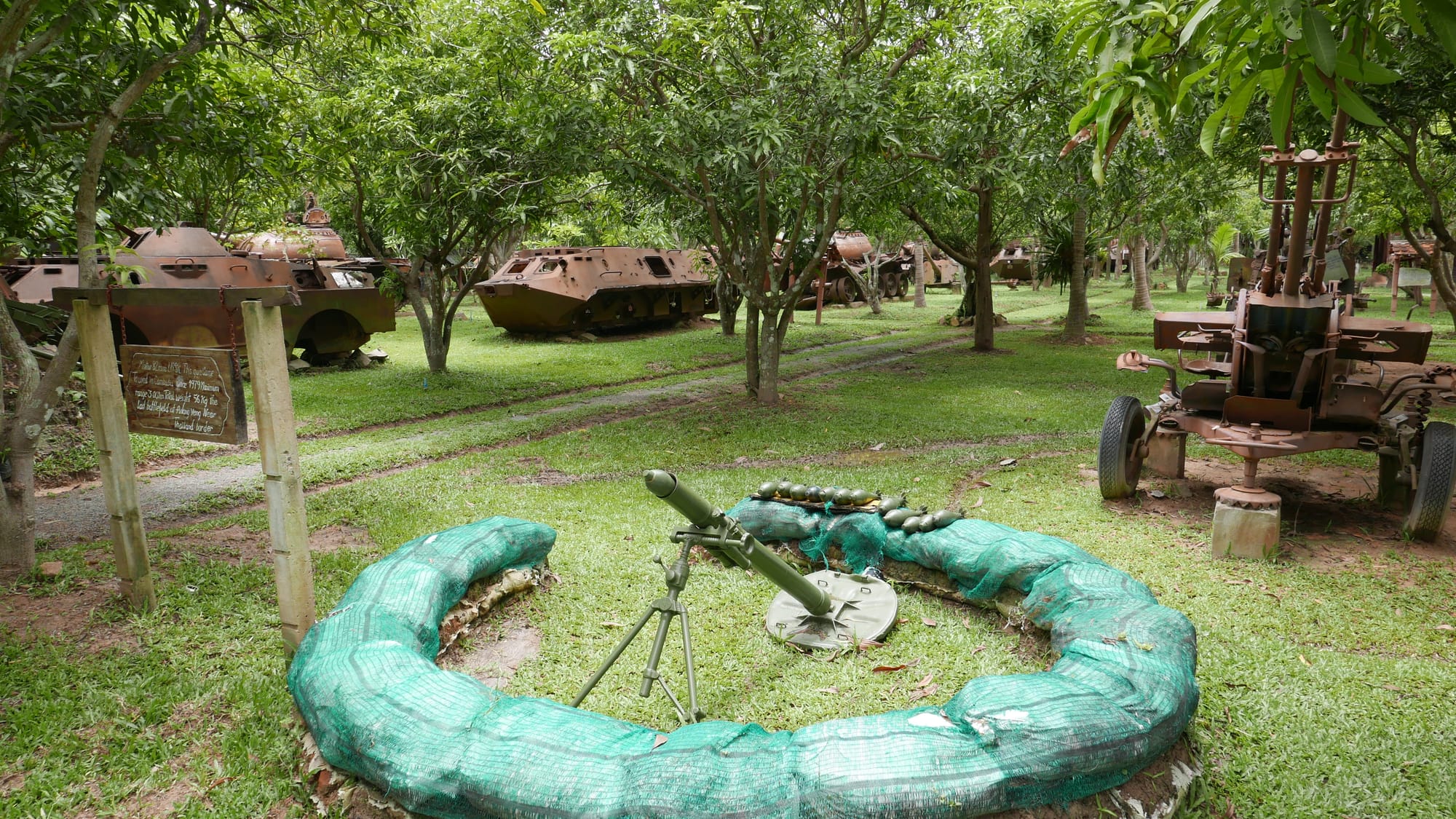
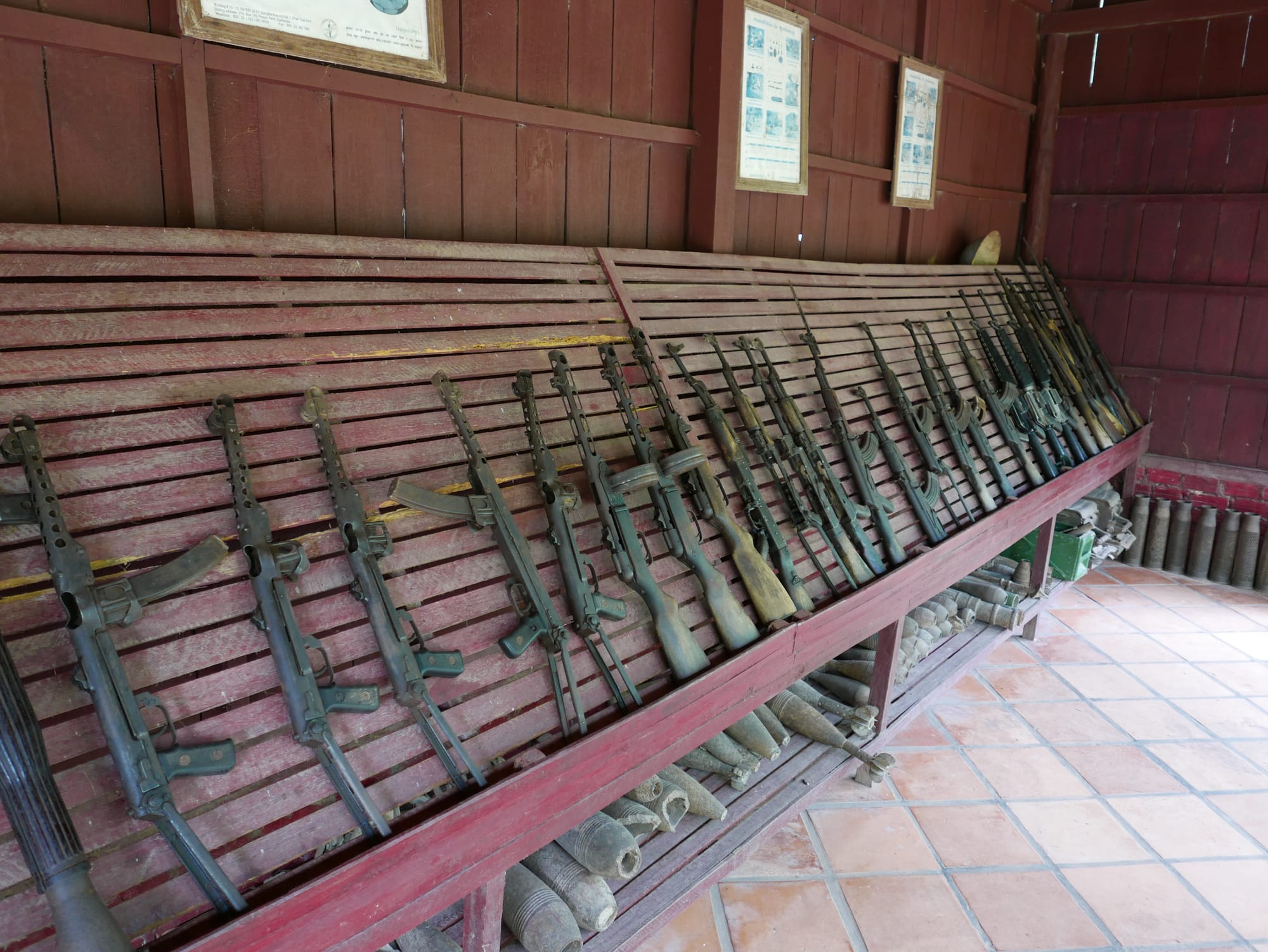
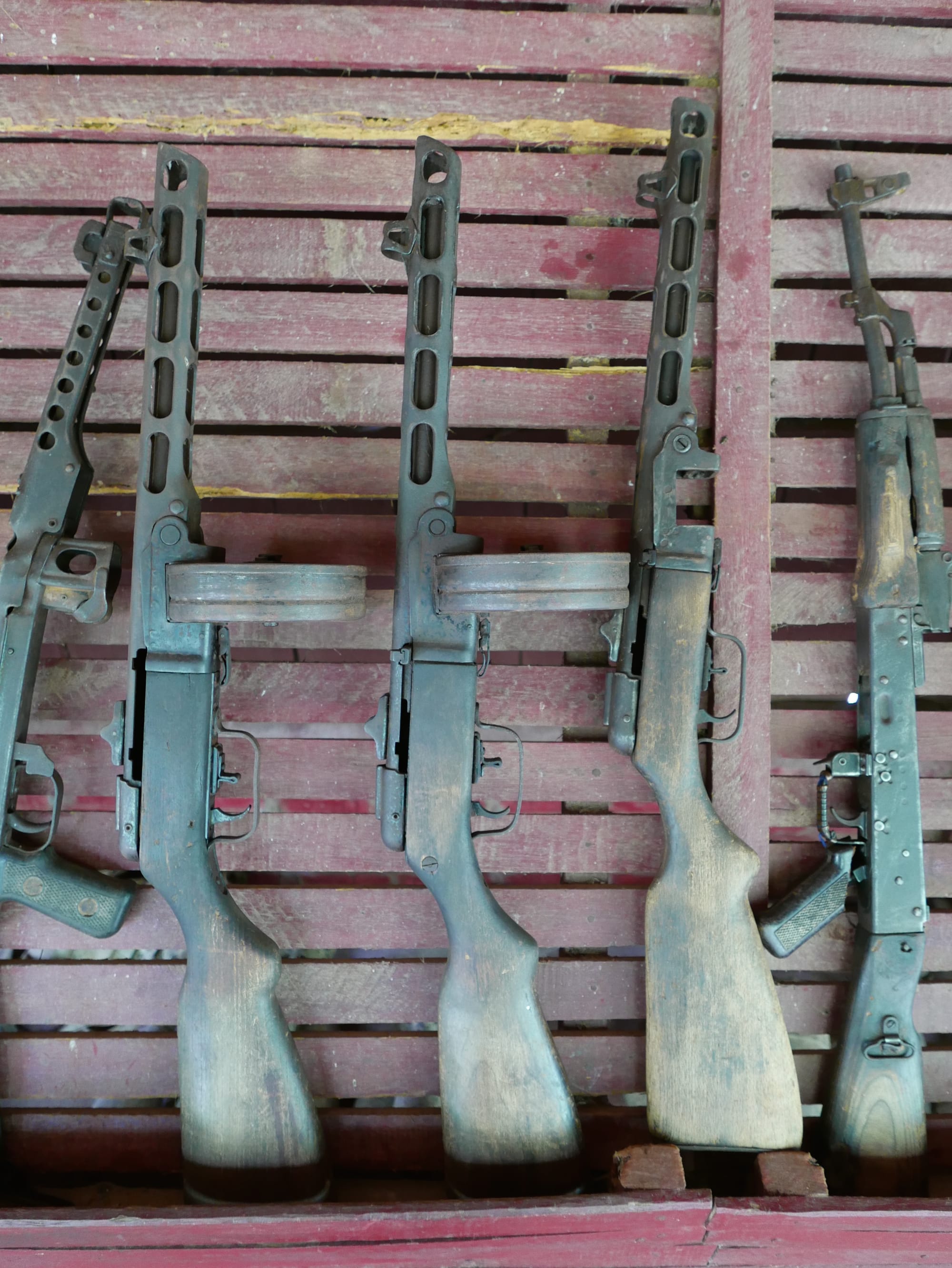
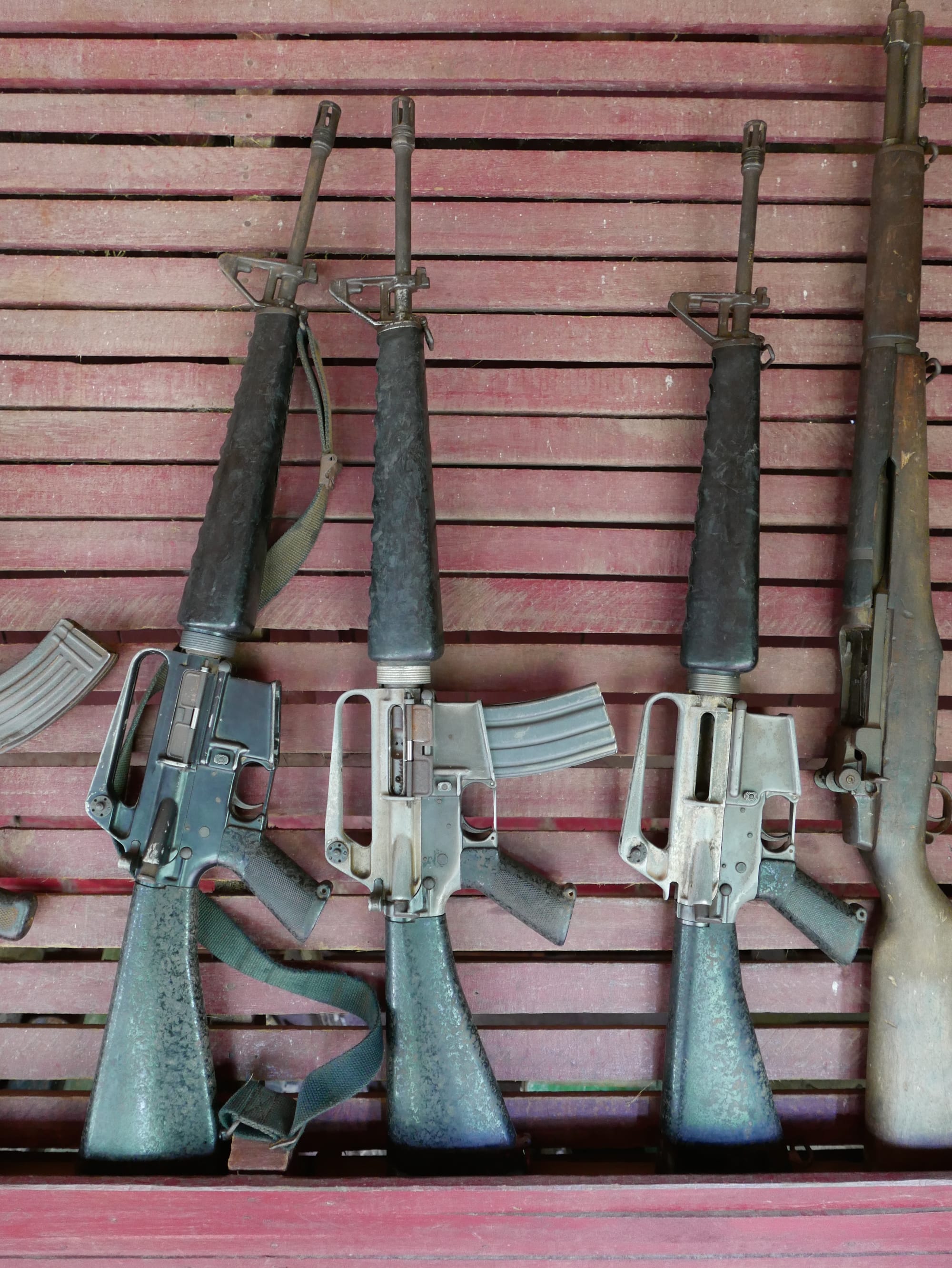
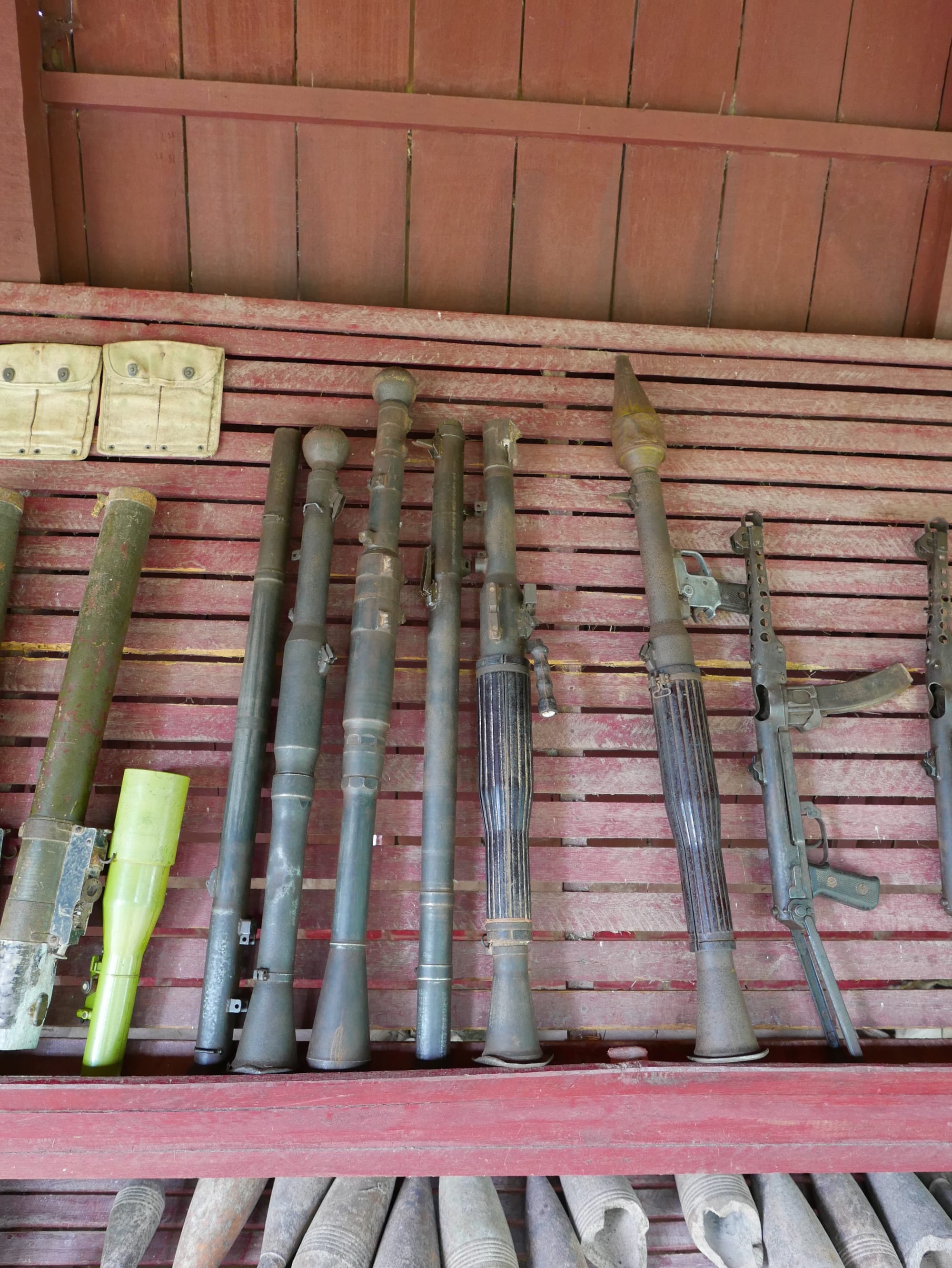
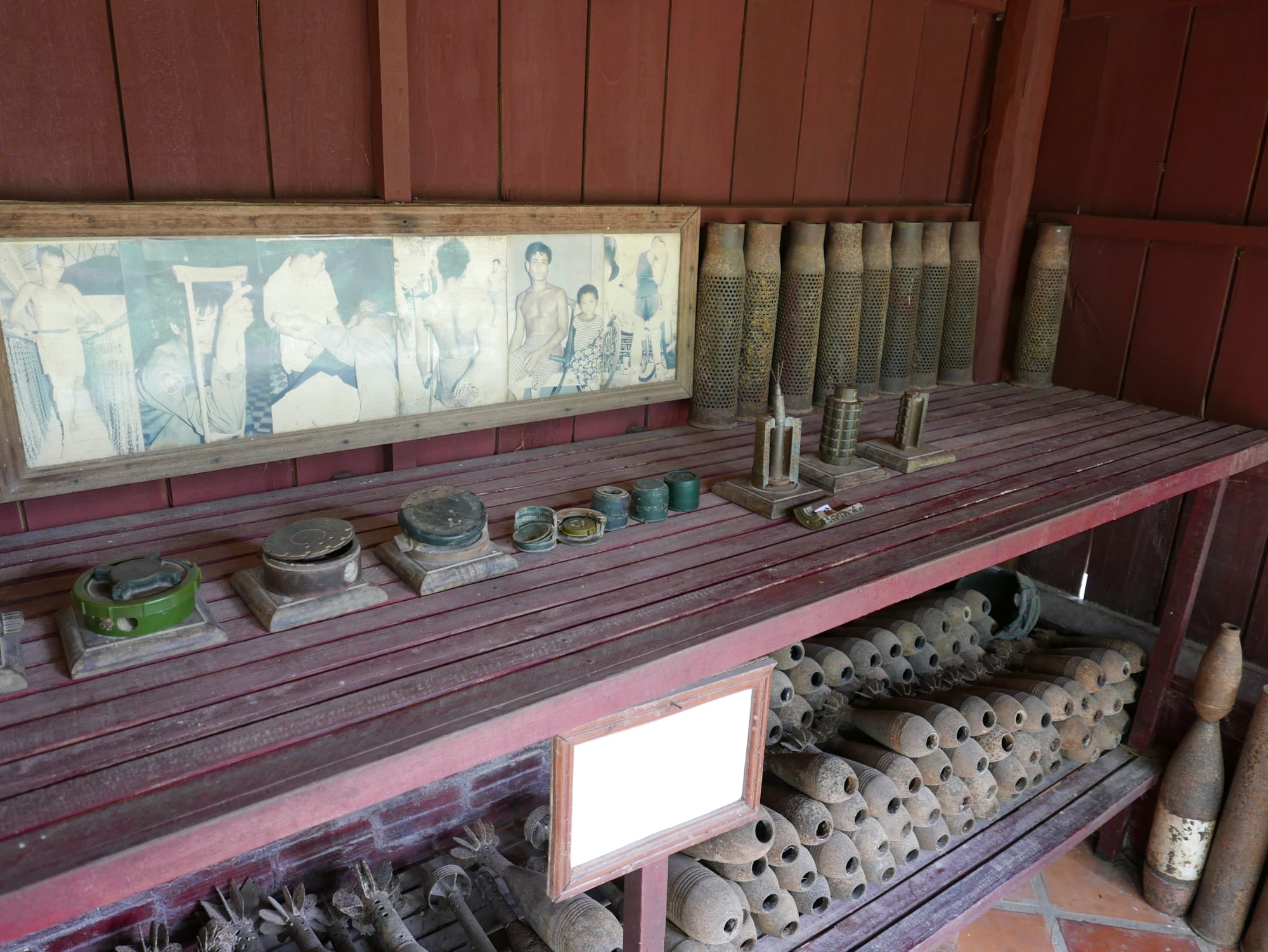
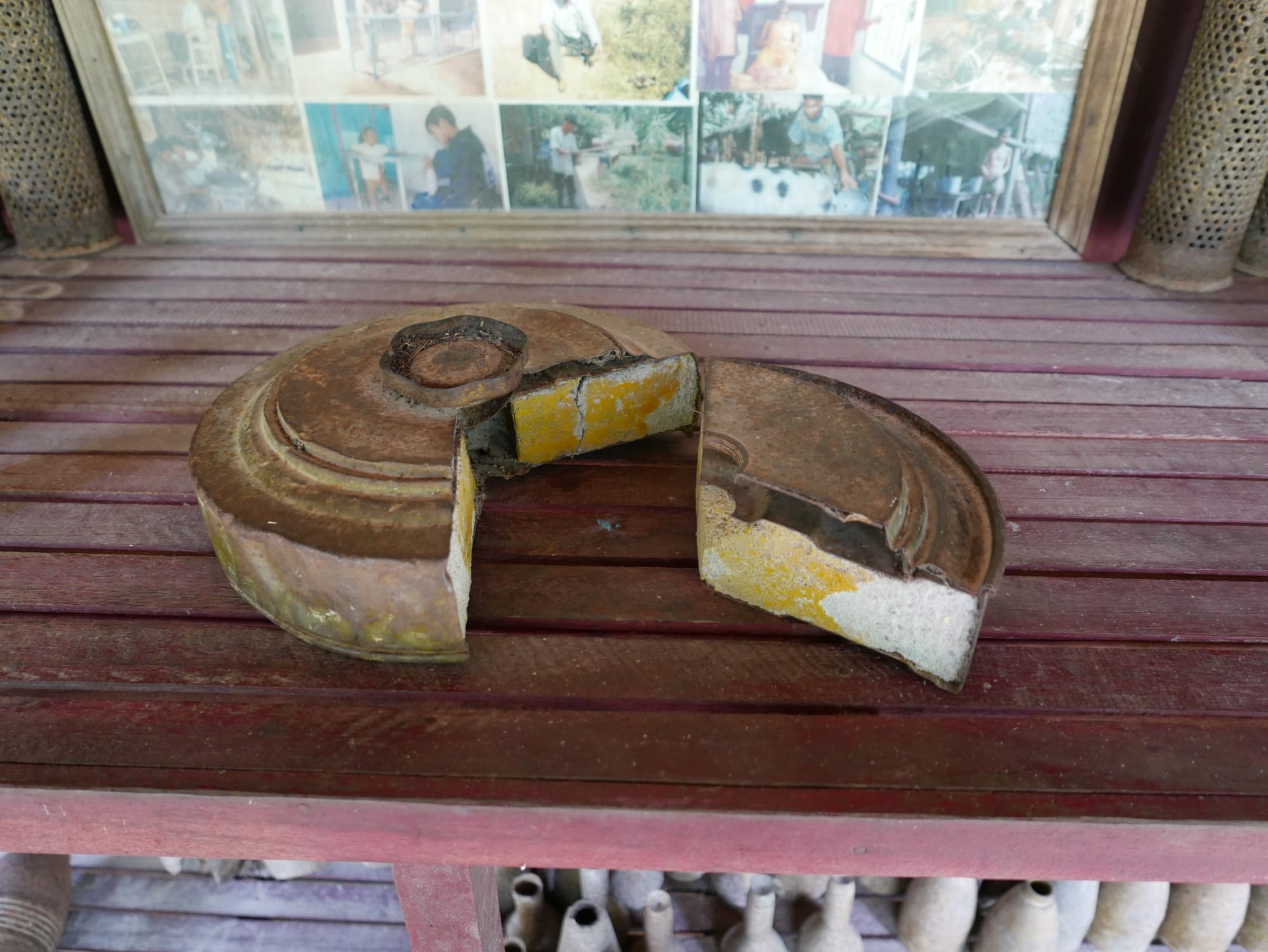
In the photograph below is a collection of anti-personnel mines.
As my guide told me how these mines were used and how effective they were, he showed me his leg, pressed down on the skin, and I could see a shape identical to one of the small metal squares on the exterior of the mine. One of these types of mine had blown up and wounded my museum guide.
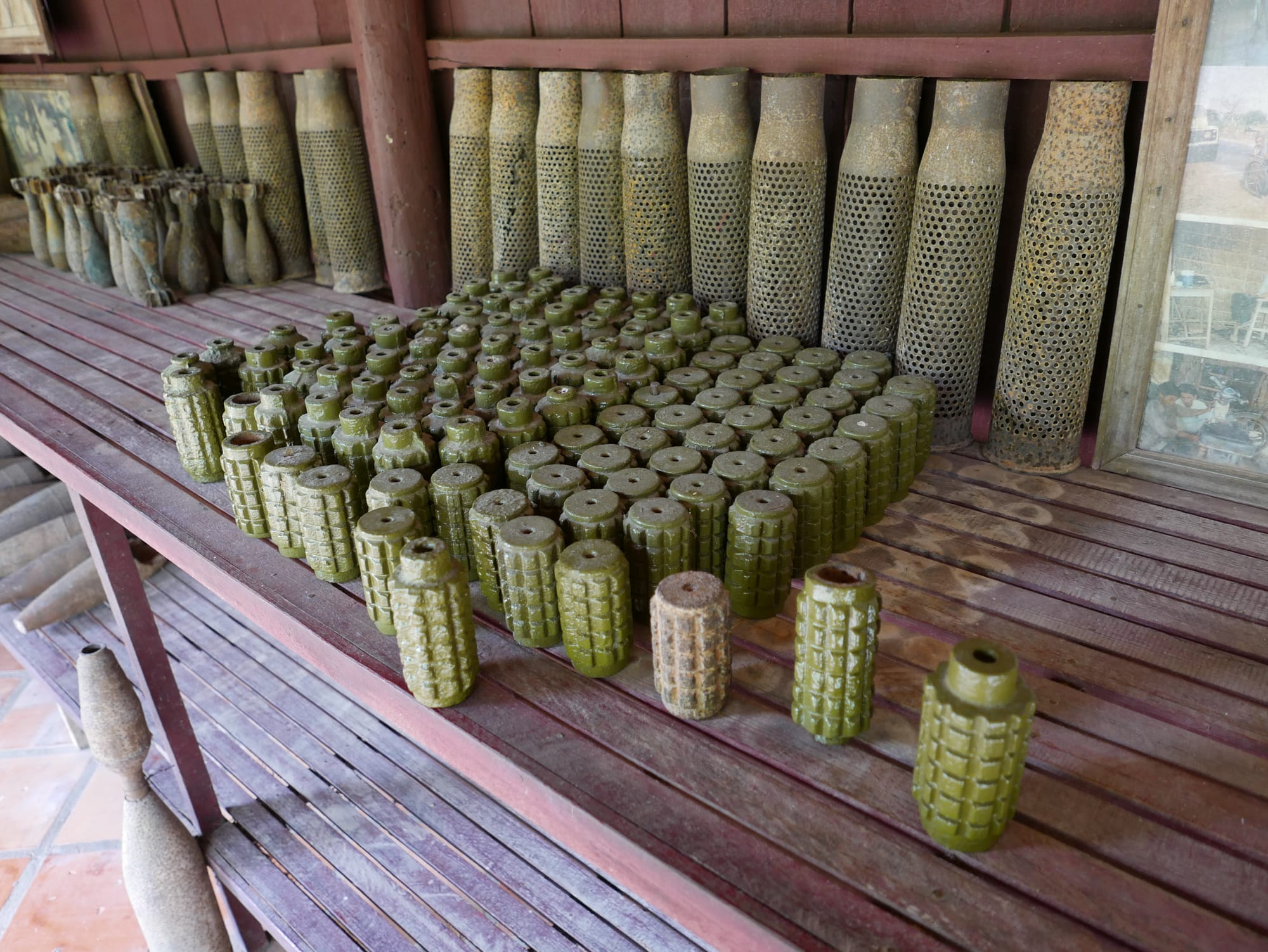
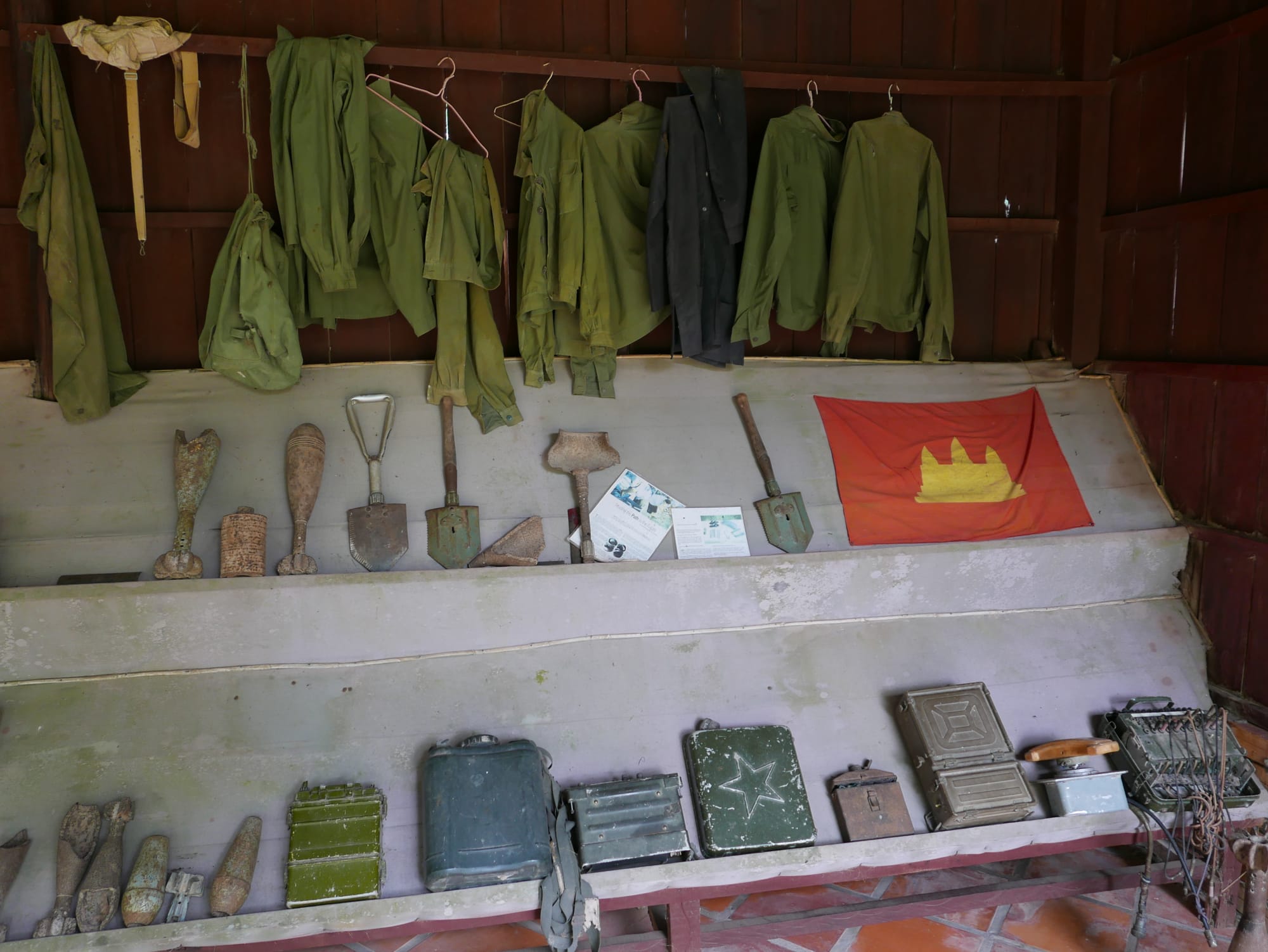
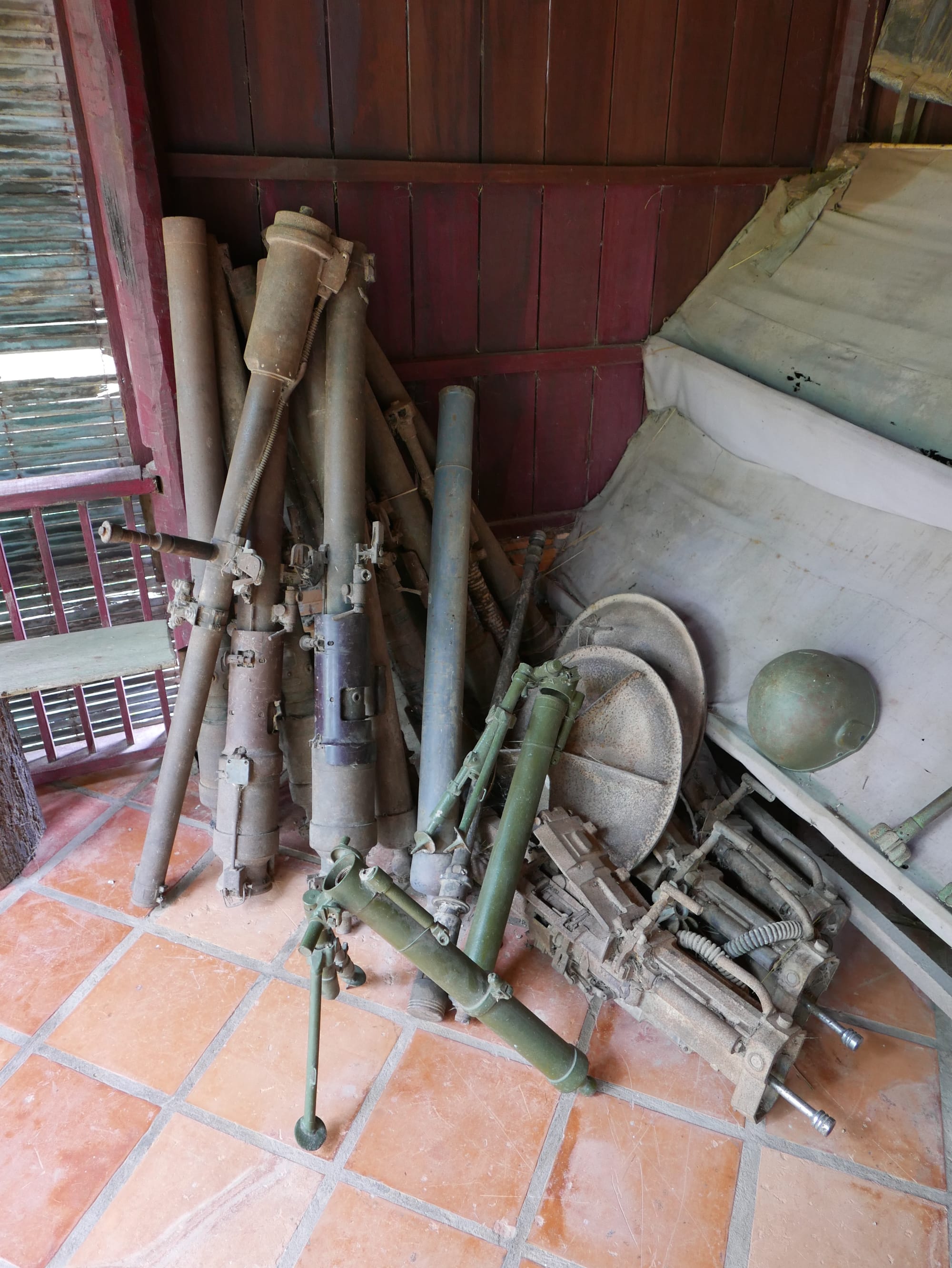
In part two, I will share some photographs of the vehicles used in the war and show how anti-personnel mines were used.
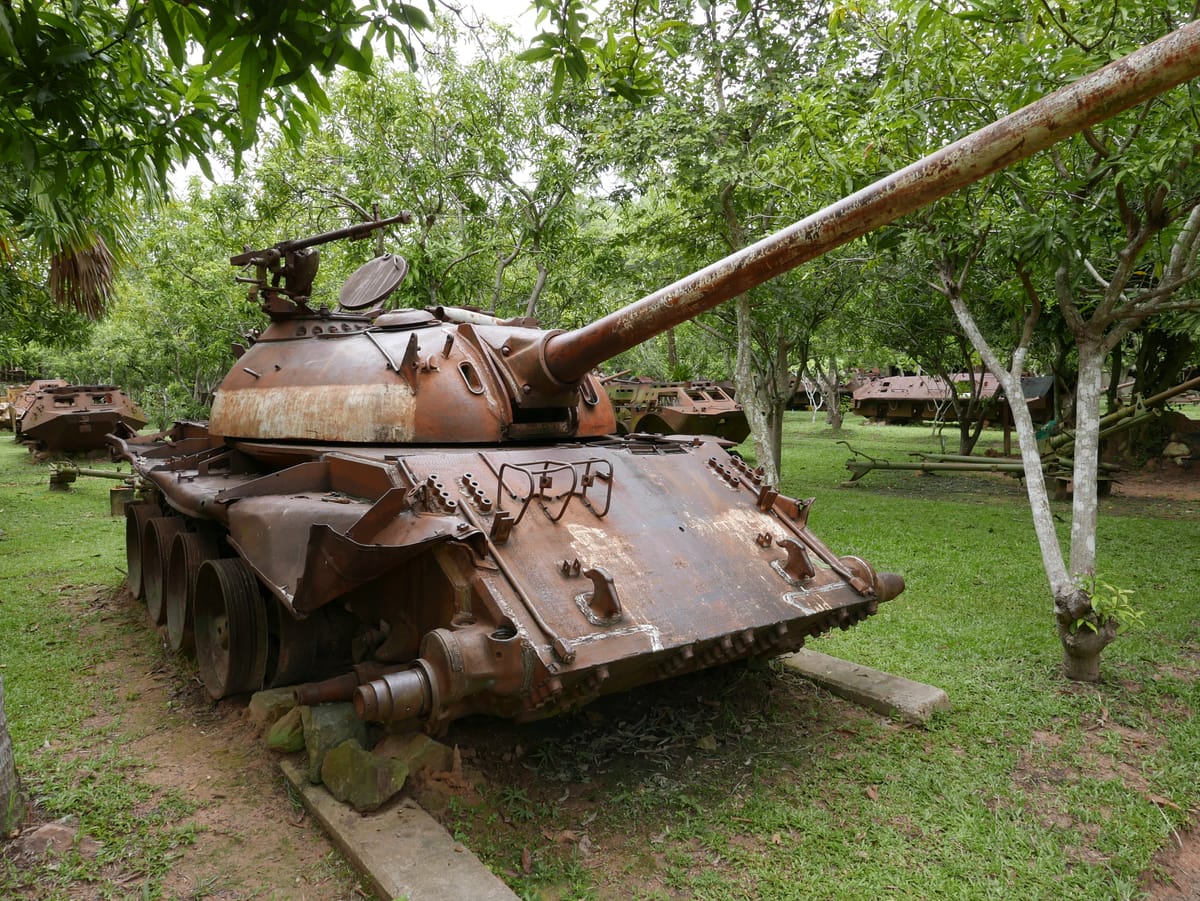
Foursquare: War Museum, Siem Reap, Cambodia
